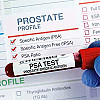Screening after age 75
Screening guidelines often change after age 75. If you're in that age group, how do you decide which tests you need?
If you're close to age 75, you may have followed the same schedule for mammograms, Pap smears, and other screening tests for decades. And if you're like many women, you may be surprised that your physician is suggesting fewer tests or longer intervals between them. The practice seems to fly in the face of conventional wisdom. After all, the risk for many degenerative diseases increases with age, so shouldn't older women be monitored even more closely? The answer is, "It depends on the woman."
By age 75, there's a growing disparity in "biological" age among women of the same chronological age. "I have patients who are quite frail and others who are in better shape than many 50-year-olds," says Dr. Monera Wong, clinical director of the Geriatric Medicine Unit at Massachusetts General Hospital in Boston. Statistics back her up: at age 75, 25% of women live an average of 6.8 more years, 50% live an average of 11.9 more years, and 25% live an average of 17 more years.
In general, the more chronic conditions a woman has, the shorter her life expectancy. A woman who has fewer years left and is focused on her overall function may not benefit from detecting a slow-growing cancer that's unlikely to affect the length or quality of her life, while another woman who has a longer life expectancy probably would.
How screening guidelines are developed
Screening tests are examinations aimed at detecting disease before symptoms develop. They range from simple, noninvasive tests like blood pressure measurements to procedures such as colonoscopy, which requires preparation and sedation. By detecting disease before it becomes apparent, clinicians are usually able to treat it more effectively — and often cure it.
Medical organizations want to be sure that screening tests are used appropriately — in people for whom they've proven most effective. Accordingly, they may conduct studies of death rates from a disease in which they compare people who've been screened for the disease with people in the same category (for example, the same gender, age group, or risk level) who have not been screened. These studies help health officials to assess whether and for which groups of people the potential benefit of a test outweighs the risks. The studies can also be used to calculate statistically the number of people who would need to be tested in order to save a life.
The United States Preventive Services Task Force (USPSTF), an independent panel of primary care clinicians established by the U.S. Congress, is responsible for developing federal guidelines for all screening tests (see "USPSTF screening guidelines for women ages 50 and over"). Many medical specialty societies also formulate their own guidelines. For example, the American Congress of Obstetricians and Gynecologists (ACOG) publishes guidelines for Pap smears, and both the National Cancer Institute (NCI) and the American Cancer Society (ACS) make recommendations for cancer screenings. Guidelines from these other organizations don't always match those of the USPSTF, but you and your clinician should be able to reconcile the differences.
USPSTF screening guidelines for women ages 50 and over |
|
|
Breast cancer |
Mammogram every two years, to age 74. |
|
Cervical cancer |
Pap smear every one to three years, to age 65.* |
|
Colorectal cancer |
Screening by fecal occult blood testing, sigmoidoscopy, or colonoscopy, to age 75. |
|
Hearing loss |
No recommendation. |
|
High blood pressure |
Blood pressure measurement at unspecified intervals. |
|
High cholesterol |
Lipid test at unspecified intervals in women with one or more heart disease risk factors.** |
|
Osteoporosis |
Bone density testing with dual energy x-ray absorptiometry (DXA) at unspecified intervals in women ages 65 and over.+ |
|
Vision loss |
No recommendation. |
|
*Screening may stop in women over age 65 who have had "adequate recent screenings" and are not at high risk for cervical cancer. **Diabetes, previous heart disease, family history of cardiovascular disease before age 60 in female relatives, tobacco use, high blood pressure, and obesity (body mass index of 30 or higher). +Screening can start at age 60 in women at increased risk for osteoporotic fractures, although the exact risk factors that should trigger screening are not clearly defined. Source: Guide to Clinical Preventive Services, 2010–2011: Recommendations of the U.S. Preventive Services Task Force, available online at www.ahrq.gov/clinic/pocketgd.htm. |
|
What the guidelines don't say
The USPSTF has found that there isn't enough evidence to recommend screening women over age 75 for certain diseases, particularly breast cancer, cervical cancer, and colorectal cancer. That doesn't necessarily mean the screening tests aren't effective. In many cases, there just weren't enough older people in the studies to permit a judgment for or against screening. In other cases, screening was recommended, but the panel couldn't determine how often it should be done.
It's important to understand that most screening guidelines are developed for the maximum benefit of a whole population rather than the individual. They aren't designed to consider each woman's unique family history, state of health, and risk factors — not to mention her expectations for her future, treatment preferences, and tolerance for uncertainty. You and your clinician can work together to develop a screening schedule that's appropriate for you. "The result should be a marriage of the expert recommendations and your wishes," Dr. Wong says.
When you review your screening tests, you might think about what you want them to accomplish. Ideally, they should offer more benefits than risks, and they should accurately identify a disease or condition for which you are at risk and for which you are willing to be treated.
Tests likely to benefit most women
The USPSTF and other medical organizations recommend some screening tests with no age limits. These tests, listed below, offer substantial potential benefits, pose little or no risk, and are covered by Medicare:
Blood pressure measurement. This risk-free test identifies hypertension, a highly treatable condition that affects 58% of women over age 65 and is a major risk factor for both heart disease and stroke — respectively, the first and third leading causes of death in women over age 75. The USPSTF didn't find enough evidence to recommend an optimal screening interval, but the Joint National Committee on Prevention, Detection, Evaluation, and Treatment of High Blood Pressure recommends blood pressure measurement at least once every two years for all adults with blood pressure less than 120/80 mm Hg — and every year for those with "prehypertension," that is, blood pressure between 120/80 and 139/89 mm Hg.
Serum lipid profile. This blood test measures total cholesterol, HDL (good) cholesterol, and LDL (bad) cholesterol. It's important for calculating your risk of a heart attack or stroke and essential for anyone at risk for coronary disease, the top killer of women over age 65. The USPSTF guidelines don't specify how often a lipid profile should be done but suggest that once every five years is "reasonable" for people at low risk. However, most people in their 70s and 80s are at higher risk simply because of age alone and therefore should be tested more often.
Bone density measurement. Your risk for osteoporosis — loss of bone density great enough to increase fracture risk — mounts steadily after menopause. About 20% of women have osteoporosis at age 70, 40% at age 80, and 67% at age 90. And one in three women will have an osteoporotic fracture at some time. The gold-standard bone-density test, dual energy x-ray absorptiometry (DXA), is noninvasive, uses minimal radiation, and takes about 20 minutes. The results are evaluated along with other risk factors, and the Fracture Risk Assessment (FRAX) tool developed by the World Health Organization (www.shef.ac.uk/FRAX) may be used to predict your risk of a fracture in the next 10 years. If your FRAX score indicates a high risk, you and your clinician can discuss your options for bone building.
Tests to discuss with your clinician
The tests below aren't recommended by the USPSTF for women over age 75; the NCI and ACS, on the other hand, don't set age limits. If your clinician recommends any of these tests, Medicare will cover the cost:
Mammography. It may seem paradoxical, but while your cumulative radiation exposure mounts with each mammogram, your risk of a radiation-induced breast cancer actually declines with age. So does your risk of an unnecessary biopsy because of a false-positive mammogram. That means mammography itself poses few risks for a woman over age 75, so the main issue is how much treatment you would be willing to undergo should breast cancer be discovered. About 20% of breast cancers occur in women ages 75 and over, but 90% of those cancers are confined to the breast and nearby lymph nodes and are thought to be less aggressive than tumors in younger women.
Colonoscopy. This test allows a clinician to look at the lining of the entire colon and remove polyps (growths that can sometimes become cancerous). It's the only screening test that can actually prevent cancer. No one enjoys a colonoscopy or the required prep, so it may come as a relief to learn that the USPSTF doesn't recommend any colon cancer screening after age 75. But other organizations, including the ACS and the American College of Radiology, advise screening for everyone over age 50. The rate of colon cancer increases with age: each year, 2.5% of 75-year-olds and 3.5% of 85-year-olds are diagnosed with the disease. If you've had a precancerous polyp removed or have a family history of colon cancer, the risk is higher. The rate of serious complications from colonoscopy such as colon perforation or major bleeding is relatively low but also increases with age.
Pap smear. This test identifies cancer cells and abnormal cervical cells that may progress to cancer. The USPSTF recommends against screening women over age 65 who have had normal Pap smears in "adequate recent screenings" and aren't otherwise at high risk for cervical cancer. The ACS and ACOG are a little more specific; they suggest that screenings end at age 65 or 70 in low-risk women who've had three consecutive normal Pap tests or no abnormal smears for 10 years. Both guidelines acknowledge the declining rate of precancerous lesions in older women and the increased risk of a false-positive test that could result in unnecessary colposcopy (microscopic exam and biopsy of the cervix). ACOG recommends that women resume Pap screening if their risk factors increase, the main one being a new sexual partner.
Other tests you might need
The USPSTF guidelines don't mention hearing or vision screening in adults, because there's too little evidence of their risks and benefits. However, Dr. Wong would like the panel to make recommendations because these two senses are so important in preserving function. Here's how things stand now:
Eye exams. The American Academy of Ophthalmology recommends eye examinations every year or two, including tests for age-related macular degeneration, cataracts, diabetic retinopathy, and glaucoma. Medicare may pay for these tests; it doesn't cover routine exams for visual acuity, although your Medicare supplementary plan may.
Hearing tests. About 80% of us have some hearing loss by the age of 80, but there's no standardized test to detect it. As a result, only 10% to 20% of older adults who could benefit from hearing aids actually wear them. There are several ways to evaluate hearing acuity, from a simple whisper test to the use of sophisticated audiology equipment. If you're having difficulty hearing and are willing to try using a hearing aid, your clinician should be able to suggest the appropriate tests. Medicare will probably pay for the exam but not for hearing aids. Some Medicare supplement plans include an allowance for hearing aids.
Your clinician's "informal" screening tests
Conversation with your clinician during a routine office visit likely includes a few informal screening tests. You may be asked about your alcohol consumption, your mood, and your memory. Your candid answers can help your clinician assess your risk for substance dependence, depression, and cognitive impairment. A question about recent falls may lead to a discussion about ways to improve your balance. This kind of screening can be critical in preserving your ability to function — and your independence.
Decisions about screening illustrate one of the upsides of later-life medical care: while you may be leaving years of standardized screening tests behind, you're receiving care tailored specifically for you.
Disclaimer:
As a service to our readers, Harvard Health Publishing provides access to our library of archived content. Please note the date of last review or update on all articles.
No content on this site, regardless of date, should ever be used as a substitute for direct medical advice from your doctor or other qualified clinician.












